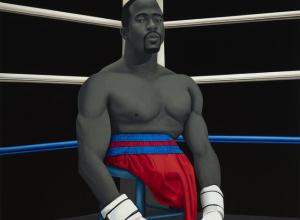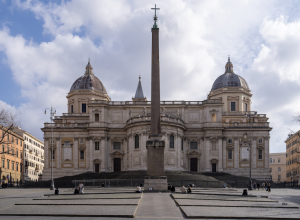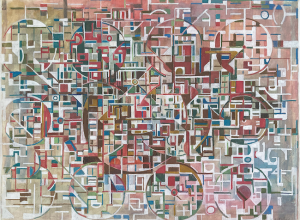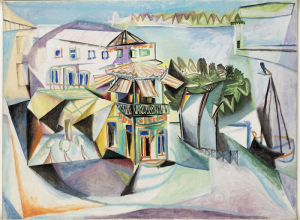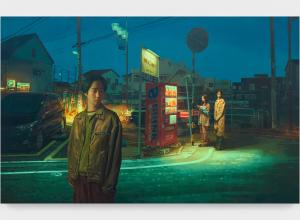Melvin Edwards, Scales of Injustice, 2017
Edwards is a pioneering figure in contemporary abstract sculpture who has redirected the modernist tradition of assemblage in welded steel for more than five decades. Scales of Injustice reconstitutes Corner for Ana, one of four site-responsive works he created out of barbed wire and chains for his March 1970 Whitney Museum exhibition. Edwards originally intended to recreate the work for a 2017 exhibition in Venice, Italy, but instead adapted it to respond to the story of Pateh Sabally, a 22-year-old Gambian refugee who drowned off the coast of Venice in January 2017 while onlookers taunted him, filmed his struggles, and offered no help. Enclosed behind rows of barbed wire, the work includes a suspended steel platform, resembling one half of a weighted scale, and a length of chain placed beneath it on the floor. Scales of Injustice is recreated anew with each installation. It is the first work by Edwards to enter the BMA’s collection and builds on the BMA’s strong holdings of post-war sculpture and conceptual art by Donald Judd, Sol LeWitt, Bruce Nauman, and John T. Scott. The BMA is organizing an exhibition to open in 2019 dedicated to Edwards’s profound long-term engagement with the work of African blacksmiths, sculptors, and artisans.
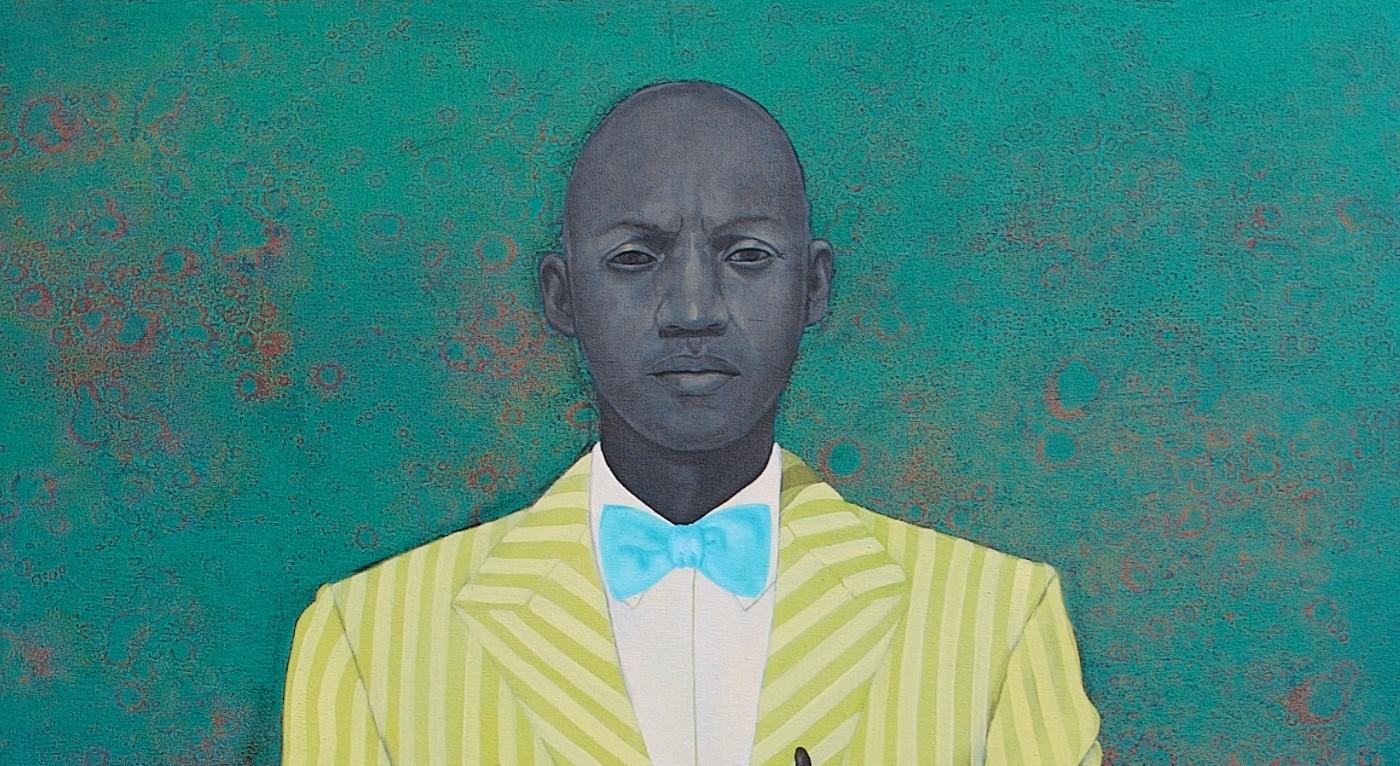
Amy Sherald, detail The Rabbit in the Hat, 2009
Museum adds 48 works by Melvin Edwards, Meleko Mokgosi, Carrie Mae Weems, and others
BALTIMORE, MD —The Baltimore Museum of Art (BMA) announces today that its Board of Trustees recently approved the acquisition of 48 works of art, including four purchased using proceeds from the auction of recently deaccessioned works. The new acquisitions encompass paintings by Meleko Mokgosi and Amy Sherald; photographs by Louise Lawler, Wolfgang Tillmans, and Carrie Mae Weems; sculpture by Melvin Edwards and Senga Nengudi; and textiles by Stephen Towns. The acquisitions also include a major gift of 35 prints, drawings, and photographs from Baltimore collectors Mary and Paul Roberts, with works by Richard Diebenkorn, Jasper Johns, Glenn Ligon, Elizabeth Murray, Gabriel Orozco, Martin Puryear, Gerhard Richter, and others.
“The BMA has now acquired 11 major works of art by women and artists of color purchased in full or in part with funds from the objects that were deaccessioned last spring,” said Christopher Bedford, BMA Dorothy Wagner Wallis Director. “This is just one aspect of the museum’s strategy to broaden the historical narrative of art and build a more diverse and inclusive art experience for Baltimore.”
The acquisitions are the direct result of the BMA’s decision to deaccession seven works from its contemporary collection through public and private sales with Sotheby’s. The proceeds from those sales are being used exclusively for the acquisition of works created in 1943 or later with priority given to artists of color and women, allowing the museum to strengthen and fill gaps within its collection.
Works Acquired with Auction Proceeds
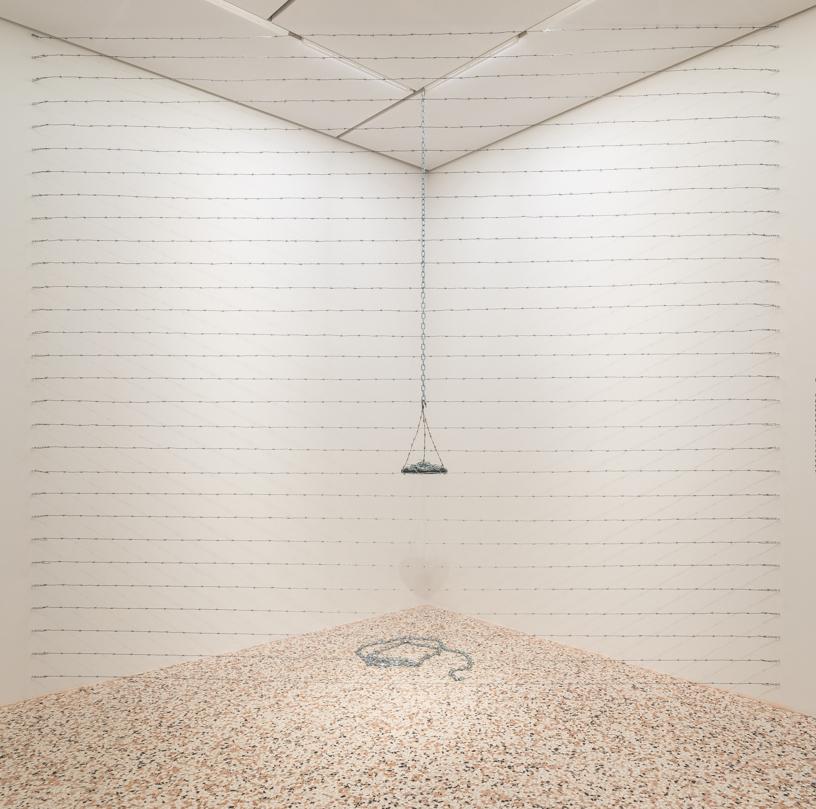
Melvin Edwards, Scales of Injustice, 2017
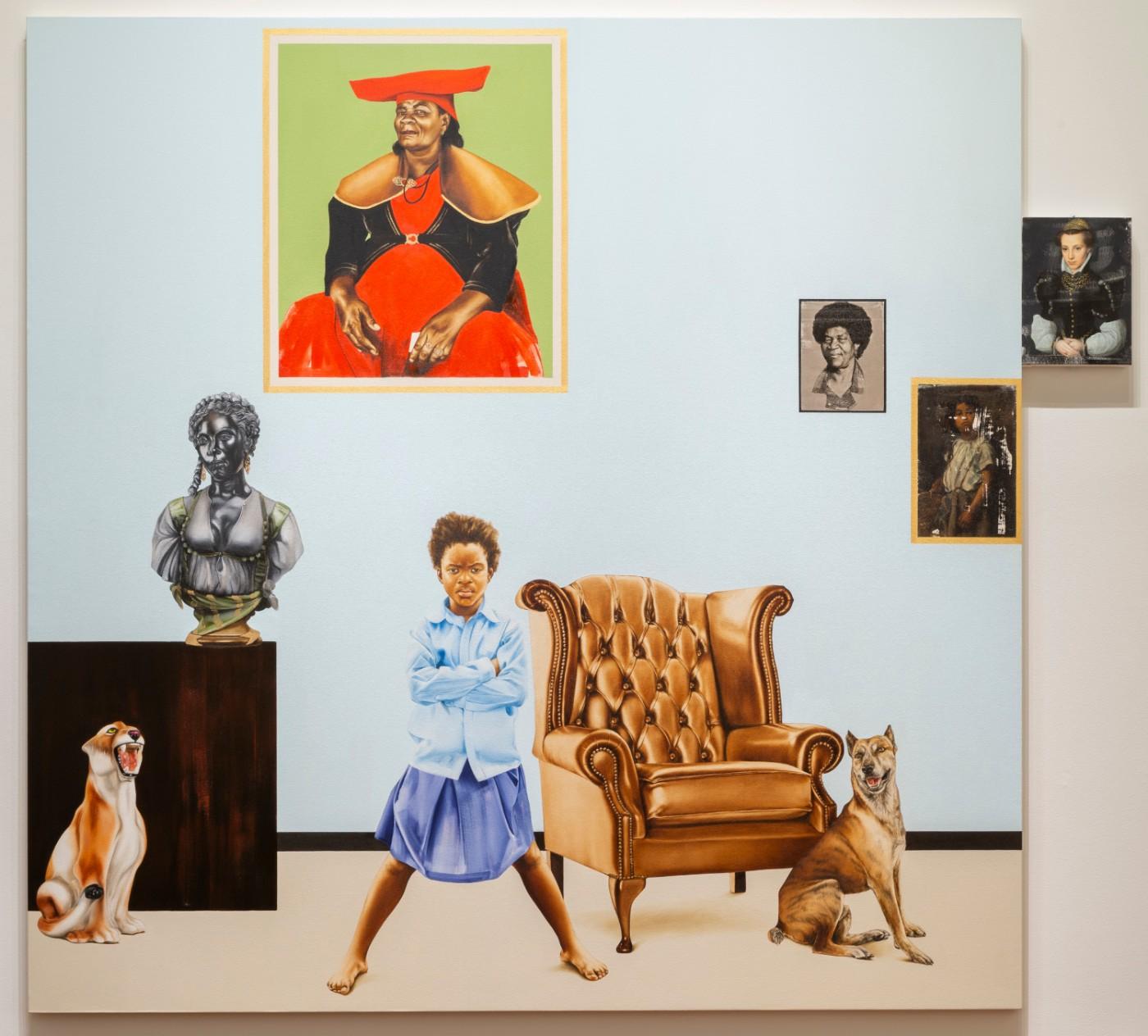
Meleko Mokgosi, Acts of Resistance I, 2018
Meleko Mokgosi, Acts of Resistance I, 2018
Mokgosi creates suites of paintings that examine ideas essential to human society such as democracy and resistance. The Botswana-born, New York-based artist’s large-scale works reference the compositions, formats, and techniques of the tradition of European oil painting with imagery from the daily life, culture, and history of southern Africa. Acts of Resistance I, which was painted for the Baltimore exhibition with the same title, is brimming with allusions to Africa and to the BMA collection. A child in a defiant posture stands near a wing chair and an Africanis dog. Two pictures above the child show a woman from the Herero tribe, whose costume combines the influence of German missionaries with the bulky form of cows, and a black-and-white portrait of Albertina Sisulu (1918–2011), who led a historic 1956 women’s march, helped found the United Democratic Front anti-apartheid coalition in 1983, and became a member of the South African Parliament in 1994. This is the first work by Mokgosi to enter the BMA’s collection and broadens the museum’s strong and growing collection of works by artists who explore issues of colonization and the African diaspora.
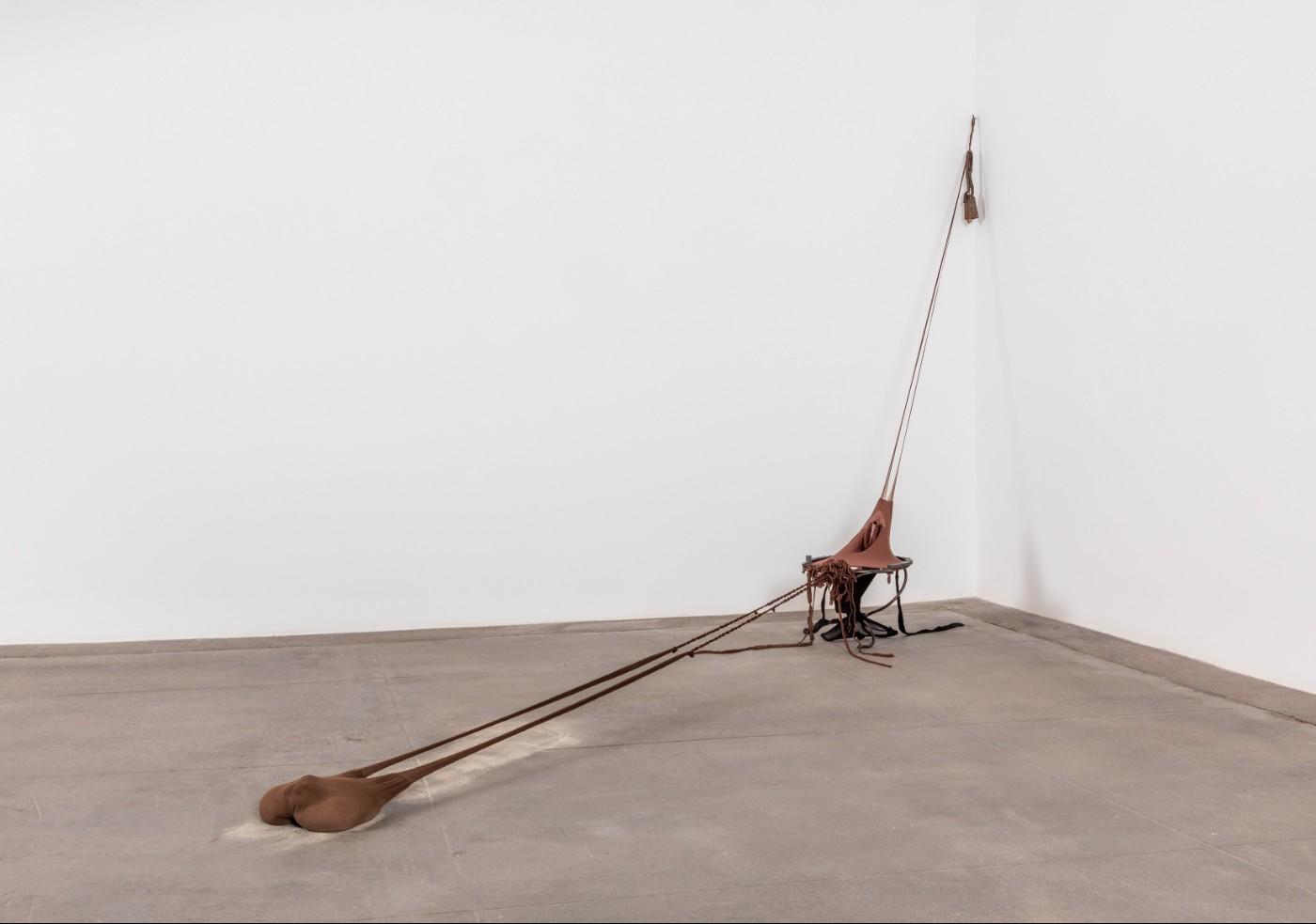
Senga Nengudi, R.S.V.P. Reverie-0, 2015
Senga Nengudi, R.S.V.P. Reverie-0, 2015
Nengudi emerged in the 1970s as one of the most inventive artists bringing together abstract sculpture and performance art. She began her acclaimed and ongoing R.S.V.P. (Répondez s’il vous plaît) series following the birth of her first child in 1974 and returned to this body of work in 2003 with the R.S.V.P. Reverie series. This acquisition exemplifies the series through its dynamic balance of energetic forces that include a readymade metal armature adorned with braided nylons and lengths of pantyhose held in place on the wall by powerful magnets or jettisoned across the floor, culminating in a plump, sand-filled pouch. Though Nengudi’s sculptures cannot be touched by viewers in a museum setting, the invitation stands as a call to approach the works in a present and active frame of mind. R.S.V.P. Reverie-0 is the first work by Nengudi to enter the BMA’s collection. It furthers the museum’s commitment to expanding its holdings of postwar work by women and artists of color and builds on the BMA’s strong collection of contemporary sculpture, especially sculptural work concerned with sensory experience, ephemerality, performance, and the body.
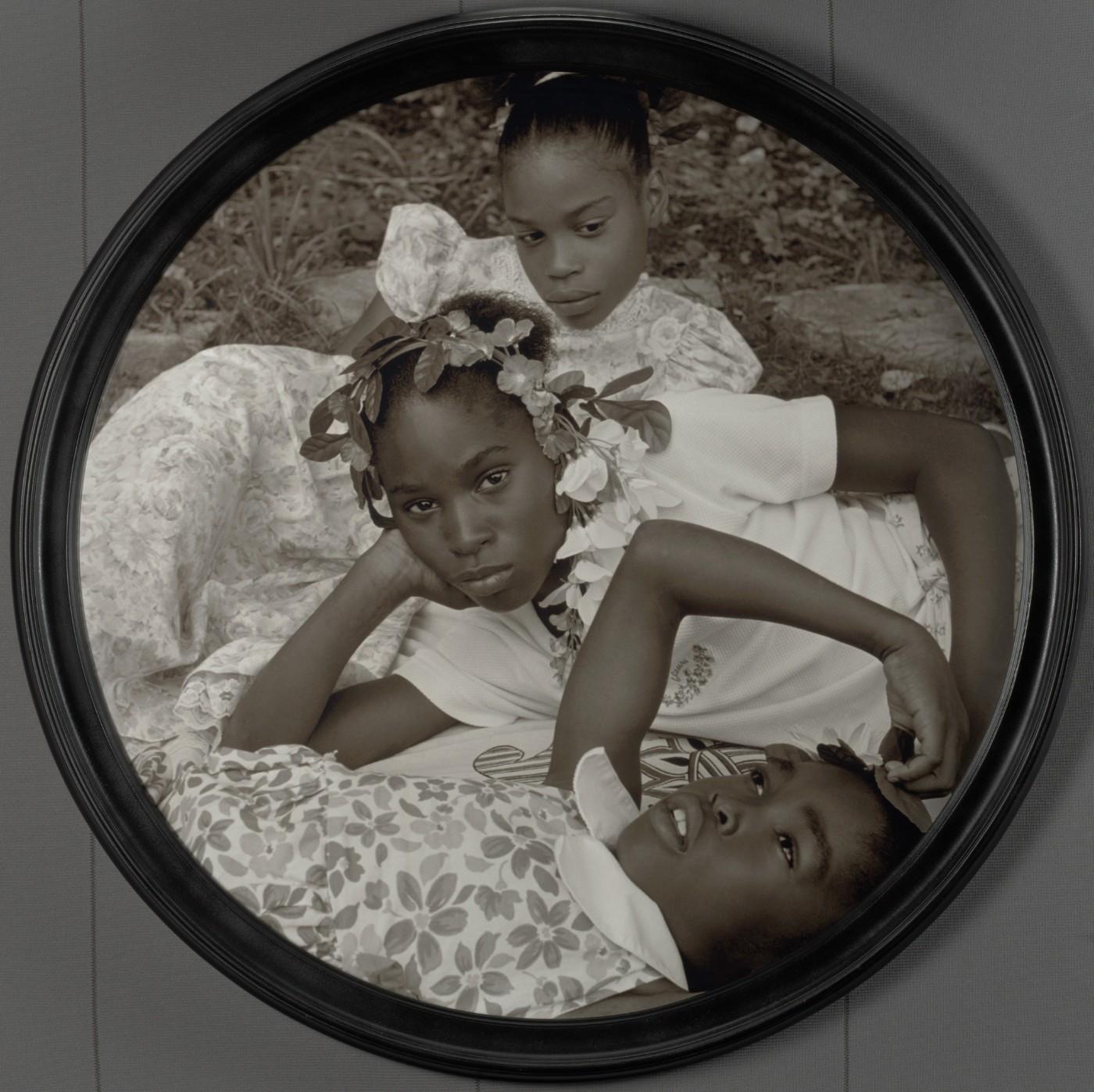
Carrie Mae Weems, May Flowers, 2002
Carrie Mae Weems, May Flowers, 2002
Weems is one of the foremost photographers of her generation, addressing topics of race and gender with images that are staged or appropriated from historical photographs. The BMA has acquired her artist proof of this stunning image from the haunting May Days Long Forgotten series. The sepia-toned and circularly shaped picture evokes the work of 19th-century Pictorialists, including Julia Margaret Cameron (1815–1879), who made photographs informed by the aesthetic, allegorical, and narrative impulses associated with painting. Weems’s subjects are girls from working-class families in Syracuse, New York, whose race and class would have excluded them as Pictorialist subjects, despite the way they so beautifully personify spring, youth, and renewal. The convex glass with which the work is framed further points to earlier regimes of optics and seeing, periods in which curved glass lenses were important technologies for both perceiving and distorting the realities of our world. May Flowers joins two major multi-photograph works by Weems from the 1990s in the BMA’s collection.
Major Gifts and Promised Gifts
Mary and Paul Roberts Collection—Baltimore philanthropists Paul and Mary Roberts recently gave the BMA 35 works on paper remarkable for their range and quality. This collection of post-war graphics comprises work by the most significant modern and contemporary artists working in the United States, such as Richard Diebenkorn, Jasper Johns, Elizabeth Murray, and Barnett Newman. The gift includes work by artists who have pursued a minimal aesthetic like Donald Judd, Ellsworth Kelly, John McLaughlin, Sol LeWitt, Agnes Martin, and Frank Stella, as well as by contemporary figures who examine the intersections among artistic form, global politics, and personal identity, in particular Martin Puryear, Ellen Gallagher, Gabriel Orozco, and Glenn Ligon. Prints by A.R. Penck and Gerhard Richter—two of post-war Germany’s most prolific social critics—are also among the works. This generous gift deepens and extends the BMA’s substantial existing holdings and increases the diversity of artists represented in the collection. These works will make their BMA debut in a special exhibition, on view April 3–June 30, 2019, presented as a tribute to Mary Roberts, who passed away in November 2018.
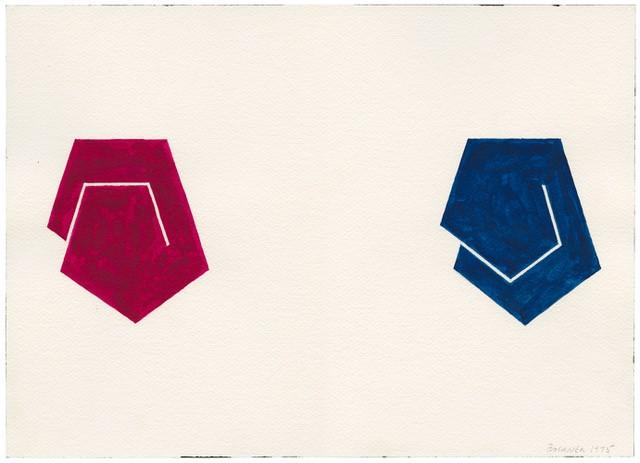
Mel Bochner, Study for Duple, 1975
Mel Bochner, Study for Duple, 1975
From the 1960s to today, Bochner has brought a strong interest in human perception and the interplay between visual and verbal language to his work. The BMA has a long history of acquiring and exhibiting Bochner’s work and this drawing is a gift of the artist in honor of former BMA Board Chair Suzanne Cohen, one of the artist’s most important patrons and a remarkable Baltimore philanthropist, who passed away in November 2018. A duple is defined as having two elements or as a multiple of two beats per measure of music. In Study for Duple, a pair of forms executed in red and blue reflects the artist’s interest in using geometry to explore the way that we perceive linear and spatial relationships when they are depicted on a two-dimensional surface. Lines fail to cohere into the pentagrams that we anticipate; however, these missed connections lead to the possibility of the forms being read as receding behind or emerging from the picture plane, depending on the viewer’s perceptual inclinations. This work joins 16 drawings, prints, books, and paintings by Bochner in the BMA’s collection. Cohen’s decades-long dedication to the artist and the BMA have ensured that the museum will be one of the most significant repositories of this influential conceptual painter’s works.
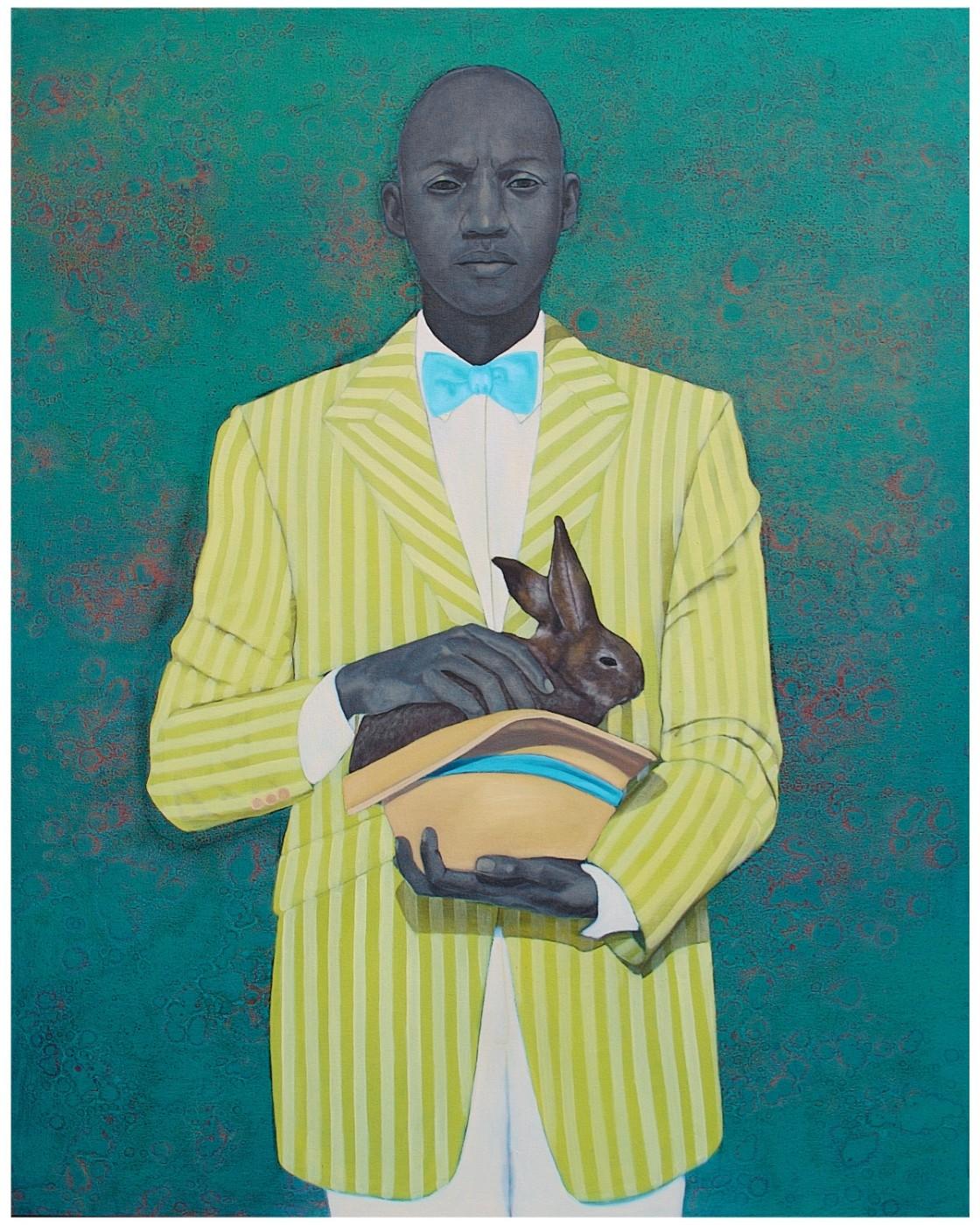
Amy Sherald, The Rabbit in the Hat, 2009
.
Amy Sherald, The Rabbit in the Hat, 2009
Baltimore-based Sherald entered the national spotlight with the 2018 unveiling of her masterful portrait of former U.S. First Lady Michelle Obama, igniting a public conversation about the role of contemporary portraiture and the codes of representation used in images of African Americans. Accepted as a promised gift to the BMA, The Rabbit in the Hat is a strong early example of the artist’s ongoing strategy of representing black figures as archetypes who exist simultaneously in reality and in a dreamlike realm of infinite potential. Together with the recent acquisition, Planes, rockets, and the spaces in between (2018), The Rabbit in the Hat will allow the BMA to present two distinct aspects of Sherald’s work—the single portrait and the double portrait—from two pivotal moments in her career. This promised gift supports the outstanding achievement of an artist who previously worked in Baltimore to global acclaim. The work also opens important dialogues with works across the museum’s historical collections, especially portraits in the American realist tradition.
Wolfgang Tillmans, John, Provincetown, 2016
Tillmans is celebrated not only for the sensitive portraits, still lifes, interiors, and abstractions that populate his body of photography, but also for the influence that he has had on younger generations of photographers. He has had an ongoing friendship with John Waters, having interviewed and photographed him over several years, and has also contributed an interview to the catalogue that accompanies the BMA’s current Waters retrospective. This 2016 portrait of Waters shows him looking uncharacteristically serene in Provincetown, Massachusetts, the beach town where Waters spends his summers. Waters’s white clothing and casual posture also suggest that Tillmans has captured the consummate showman and much-photographed subject at a moment when he has relaxed his persona. This is the second work by Tillmans to enter the BMA’s collection.
Anne Truitt, Summer ’86, No. 6., 1986
The BMA has the distinction of having the strongest institutional holdings of Truitt’s work anywhere. Starting in the early 1960s, the artist moved American abstraction forward by bridging the expressionistic color of Abstract Expressionist and Color Field painting with the reduced geometries of Minimalist sculpture. The BMA has been a long-time supporter of Truitt’s art and has organized major exhibitions of her work in 1969, 1975, and 1992. Summer ’86, No. 6 is an acrylic work on paper that reflects the vibrant color choices that Truitt made in the 1980s and demonstrates how she created compositions that layer a new geometric logic over the shape inherent in a support, whether paper, canvas, or wood. The irregularities of shape introduced into the green rectangle are characteristic of many of Truitt’s paintings on paper starting in the 1960s. The BMA currently owns 12 Truitt sculptures from the 1960s and early 1970s as well as three paintings. Prior to this gift, the museum had only one work on paper by Truitt in the collection





